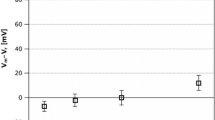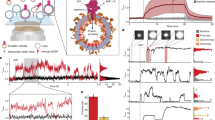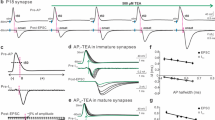Abstract
IF Ca2+ were distributed passively across the nerve membrane, the existence of a membrane potential of 50–60 mV negative with respect to the external medium would lead to an accumulation of Ca inside the cell. However, ionised Ca is normally 105-fold less concentrated inside the cell than it is outside1–3, a difference which is essential for the normal function of excitable preparations such as muscles and the synaptic regions of neurones. The observation that the extrusion of Ca depends in part on external Na led to the proposal that the energy for Ca extrusion may be derived from the transmembrane Na electrochemical gradient4,5. More recently, it has been found that cellular metabolic energy in the form of ATP interacts with the Ca transporting system6,7. Nevertheless, its role as an energy source for Ca transport is still something of a puzzle. At present, it is not clear whether ATP is consumed when Ca is transported across the axolemma or whether it only interacts with the Ca-transporting system without itself being hydrolysed. On the assumption that ATP might energise Ca transport, it should be possible to demonstrate an ATP-driven net Ca extrusion in the absence of other energy sources such as those derived from the normally existing ionic gradients across the membrane. We report here experimental evidence for a direct involvement of ATP as an energy source for Ca transport in squid axons.
Similar content being viewed by others
References
Hodgkin, A. M. & Keynes, R. D. J. Physiol., Lond. 138, 253 (1957).
Baker, P. F., Hodgkin, A. L. & Ridgway, E. B. J. Physiol., Lond. 218, 709–755 (1971).
DiPolo, R. et al. J. gen. Physiol. 67, 433 (1976).
Blaustein, M. P. & Hodgkin, A. L. J. Physiol., Lond. 400, 497 (1969).
Baker, P. F. Prog. Biophys. molec. Biol. 24, 177–223 (1972).
Baker, P. F. & Glitsch, H. G. J. Physiol., Lond. 247, 44P (1973).
DiPolo, R. J. gen. Physiol. 62, 575 (1973); 64, 503 (1974).
Brinley, F. J., Jr & Mullins, L. J. J. gen. Physiol. 56, 2303 (1967).
Baker, P. F. & McNaughton, P. A. J. Physiol., Lond. 259, 103 (1976); 276, 127 (1978).
DiPolo, R. J. gen. Physiol. 69, 795 (1977).
Author information
Authors and Affiliations
Rights and permissions
About this article
Cite this article
DIPOLO, R. Ca pump driven by ATP in squid axons. Nature 274, 390–392 (1978). https://doi.org/10.1038/274390a0
Received:
Accepted:
Issue Date:
DOI: https://doi.org/10.1038/274390a0
- Springer Nature Limited
This article is cited by
-
CD22 attenuates calcium signaling by potentiating plasma membrane calcium-ATPase activity
Nature Immunology (2004)
-
Fine structural localization of Ca2+-ATPase activity at the frog neuromuscular junction
Journal of Neurocytology (1988)





